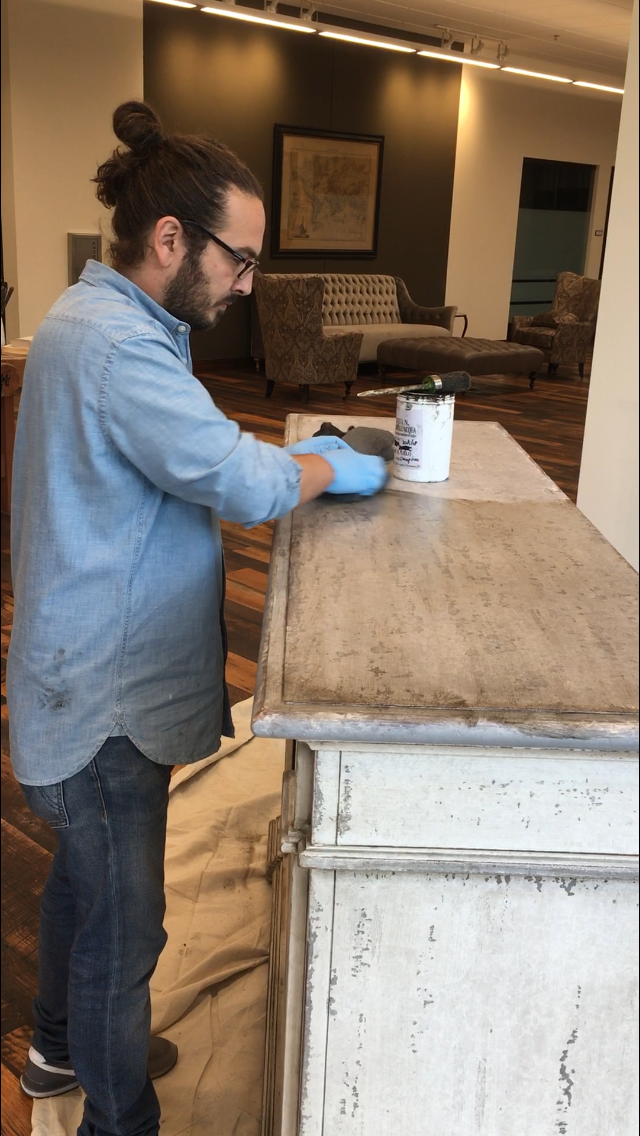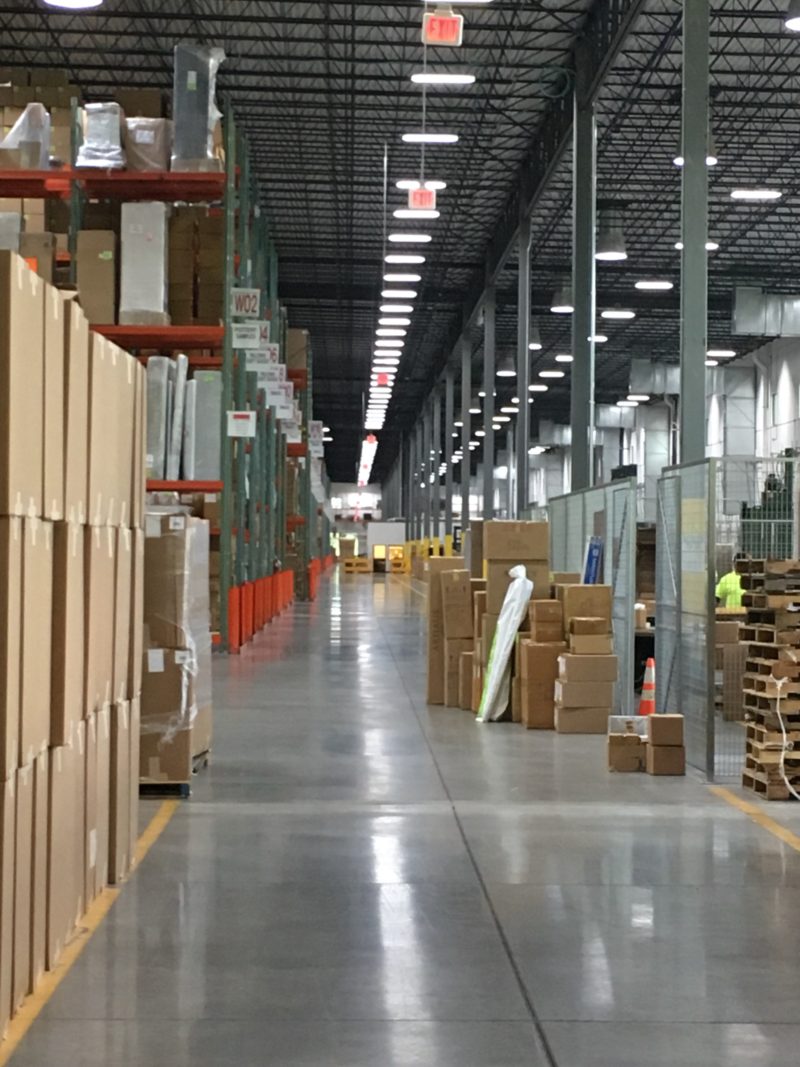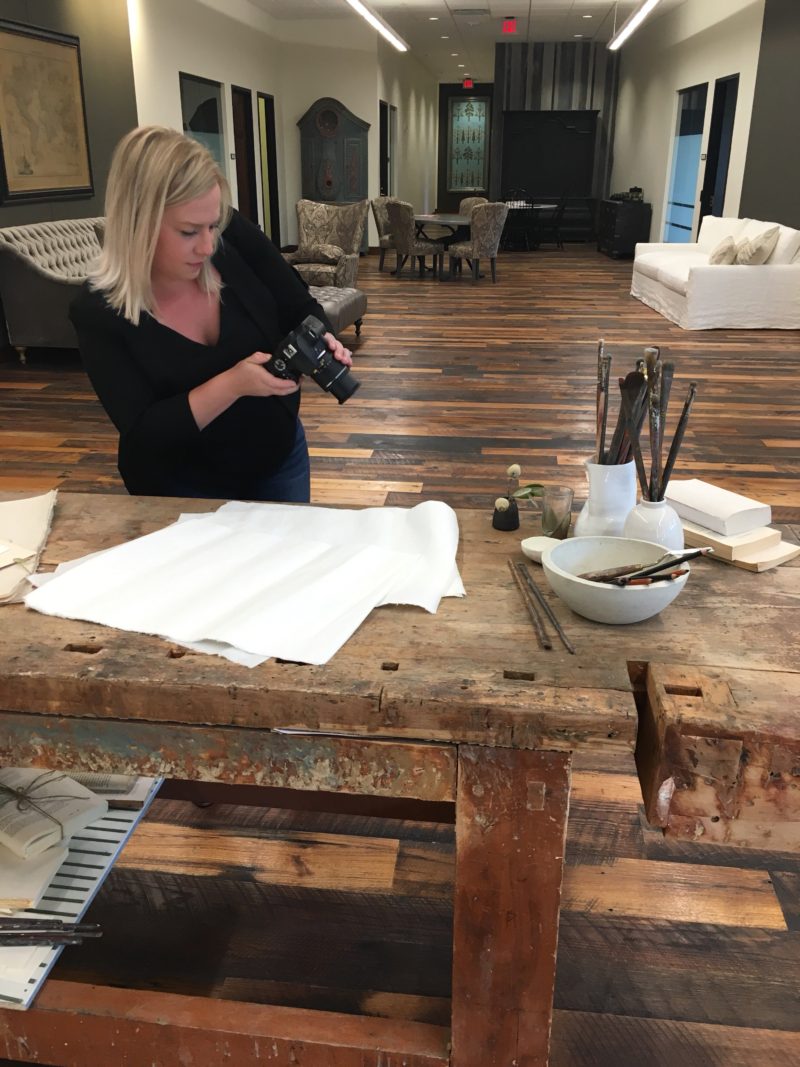Hello World,
Rob here.
A few weekends ago I experienced something I only thought existed on the video displayed on Google’s career page. Go to it. On there, you’ll virtually experience the supposed joy that comes with employment at our friendly overlord. Creating apps, exploring data queries, and everything our technologically overloaded minds believe we should want in a job. But I, the constant cynic, question the love one can have typing code for hours at a time – even despite the 15 minute ping pong breaks. How can anyone enjoy work or at least care so about their professional outputs that much? But contrary to my tendency to stubbornly believe I am right, my mind has been changed. I am now convinced that at least one company has achieved a shared passion for producing the finest product possible. Arhaus, pronounced “Our House” (a twist on German spelling that I can only assume is a joke played on pompous know-it-alls like myself who think it should be said “Are Haas”) is definitely one of those passion brands.
I’ve only ever viewed passion brands from a consumer’s perspective. Women who would only wear clothes from Nordstrom. Baseball players who only use Rawlings gloves. Groceries bought only from Whole Foods or dads that only drive Fords. Conceptually that makes sense to me. I imagine people arguing “why mess up a good thing?”. And yes I will pay more for quality so I get it. But I never knew that producers of those goods and services could care about their effort as much as the buyer. With a little bit of luck, I got to experience that passion firsthand by tagging along after my semi-famous wife on her visit to the Arhaus headquarters.
We arrived at the sprawling complex just outside Cleveland at 9:30 a.m. rushed and harried from too much driving and too little sleep. The building is new, clean, and exactly what’d you’d expect of a large warehouse in the suburban outskirts. Compared to the stores that are often situated in cool old buildings, this space was functional over hip. But as it is utilized for operations only and not open to the public, its non-adherence to Arhaus’ traditional awesomeness can be understood. With nervous jitters and sleep deprived grogginess, we entered the section of the building through its faux store entrance. We were welcomed by the friendly receptionist who advised our host for the day, Lauren, would be right with us. Two minutes later Lauren arrives and jubilantly hugged SQ – ice immediately broken, warm feelings all around.
Lauren took us to a presentation the company was hosting. All the store managers from the roughly 70 retail locations were at HQ to view part of the operations behind the pieces they sell. And what a presentation it was! Normally I would expect a factory to stamp, press, and assemble furniture as fast and as cheaply as possible – woe to the poor line worker who couldn’t move her hand fast enough and now the dootegahagan chair has a little extra cushioning. But instead there was an Italian artist hand-painting a faux granite tabletop with a chicken feather. I spoke with the very Italian sales rep and asked what seemed to me a perfectly logical and in depth question, “why a feather”? I have to give him credit as it must have taken a lot of self-control to not make me feel dumb because the answer to him was so painfully obvious. He said, “because that’s what makes it look like granite”.

As we continued watching the masters do their work, another photographer attending the event started talking to us about what he had seen the artists do. He explained that what impressed him the most was on the day before we arrived he watched one of them paint a perfectly straight line on the side of a wardrobe. As a semi-skilled painter myself I attempted this on a piece of paper with a pen. My two inch atrocity of a “line” makes me question my self-proclaimed “semi-skilled” status. Worse yet, the artist’s line was four feet long, painted with a brush, and applied vertically.

The presentation wrapped up and Lauren cheerfully introduced us to several people, all of whom were bright, kind, and astute enough that my hope for mankind’s future was reassured. One of the people we met was Maria Smith. She is the type of manager that other managers should study. They should try to learn how she exerts confidence warmly, shares ideas positively, and how she makes you want to hug her just to thank her for the next nice thing she’ll do for you. Maria provided SQ and me an overview of the store and brand and truly listened to Susan when she explained what Lauren and she were working on. As the tag-a-long interloper I simply sat back and enjoyed watching passionate collaboration in real time. The three spoke as if they were long-term partners harmoniously solving a daunting problem until Maria had to leave to, no doubt, harmoniously solve other daunting problems.
As SQ and I were functioning on four hours of sleep, we next went to refuel on exquisite coffee brewed in a machine that, although it had only one lever, we required the assistance of the staff to operate. I paired my coffee with a chicken and bacon sandwich on sourdough that I can only describe as perfect. Graciously John Reed, the CEO, subsidizes the organic and locally produced food so the cost was quite minimal. We sat outside on the patio furniture behind the office. Obviously, this being Arhaus, the lunch area was decked out. (Pun fully intended) Huge patio sets with 10X10 umbrellas adorned the area. We were the first to eat and a good thing too because the area quickly filled up with people genuinely enjoying their lunch break. When was the last time you ate your work lunch outside on a nice summer day? I’m not sure I ever have.
The three of us talked for at least an hour. We learned about Arhaus some more, but we also heard stories about the people that work there and that is what I found to be the most interesting. John Reed is one of those magical unicorn type of executives that actually gets to know his employees. Lauren detailed how when she was first hired she walked around the factory with him and was incredibly impressed by how he knew everyone’s name and details about their families. And John was just the start of the awesome stories of Arhaus employees going above and beyond. Lauren explained in detail how the company allows, even promotes, leveraging Arhaus’ assets in support of people and the planet and we got to learn about these amazing and generous efforts the employees have made when we visited the warehouse after lunch.
Lauren described the warehouse as 10 football fields large, which is impressive in itself; however, she forgot to say that it was at least 50 feet high and the amount of furniture stored in there was simply startling. I lost count but I’d guess at least 100 football field long shelves that were ten feet wide and 40 feet high were neatly packed to the brim. Among all these shelves were bee-like pickers swarming around on two-ton forklifts, picking out pieces to be loaded into trucks. Walking up to meet our clearly out of place group was Jamil Reglus, a soft-talking, calming influence that conveyed a very strong sense of having everything under control.

Jamil is a warehouse manager that clearly knows his job very well. He indulged me in my never ending quest to fill my brain with inconsequential information. We discussed how pickers used groves in the concrete floor to prevent them from knocking down the furniture, what the temperature of the warehouse was in winter and summer, and how this newly built, gigantic space was already too small for their needs. Lauren and Susan, clearly uninterested in our nerdy discussion, were walking ahead towards the fabric section where chairs were being effortlessly upholstered to precise standards.
It was in this upholstering section where I learned of two separate initiatives that Jamil and his co-worker, Mariam Massop, undertook, not under the direction of Arhaus leadership, but of their own volition that I thought were just both so brilliant. First, one of Jamil’s jobs is to find people to sew fabric for the furniture. Typically this would be done at the lowest cost facility – likely somewhere in a third world country. Not only would this perpetuate a horrible cycle of taking advantage of the impoverished, it would also come with steep environmental consequences associated with shipping tons of material back and forth. Instead of this, Jamil developed a program where he hired people from the local community, some of which had prior difficulties with finding employment for all the normal reasons people have difficulty finding jobs. But despite this and the fact the wages were above those that Arhaus could have secured, management saw the benefits to the community, the environment, and the overall local area economic improvements and chose the more sustainability option.

Sustainability was a constant theme that I learned about through my tour and my research of Arhaus. The second amazing example of leveraging Arhaus’ assets to promote sustainability was when I met Mariam. She is a grandmother first and most proudly. This was obvious to me as her personality zealously exuded a maternal warmth. We met her as she was showing off pictures of her recent volunteer work to a co-worker. She and her mom had reupholstered an entire recliner. On it, they had sewn the Browns helmet and the fabric was in the Browns’ colors. She estimated it took the two of them around 80 hours to finish. The best part was that they did all the work just to donate it to a local charity. But as amazing as that effort was, it wasn’t how she used Arhaus’ assets to help others. That effort involves her program to use all the fabric byproduct that would have been landfilled for charity sewing drives. The excess pieces are used to make quilts and other items to be used by the charity center or sold to raise revenue. How amazing is that?
After the tour of the warehouse, our day was wrapping up but not before Lauren kindly said ‘hi’ to at least the 50th employee that day. I knew she was a recent hire in the newly created role of social marketing manager so I asked if she had already met everyone. She replied, ‘no, I just think saying ‘hi ‘makes people happy’. Needless to write, it did. Her warmth was contagious and I saw that people genuinely liked her. It is little acts like saying ‘hi’ to people that make all the difference but when you couple the genuine geniality of a huge number of kind people with a CEO’s generously helping pay for a healthy lunch for everyone, and the obvious pride the Italian artists displayed of their work on furniture pieces that will last generations you garner a sense understanding about the place. You learn to see Arhaus is as a collection of people, enthusiastic about furniture, and life, and art, and all the pieces that make up our refuges from the outside world and lastly, you realize why Arhaus is a passion brand.

